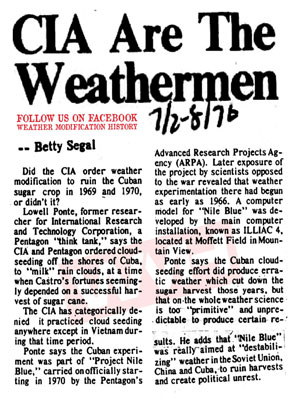
TOXIC HOT SEAT (the movie)
Chemical flame retardants are everywhere. Our furniture. Our homes. Our bodies. But do they work as promised? And are they making us sick?
The three chemical companies producing flame retardants would prefer that we not ask these questions, and they've spent millions of dollars on lobbyists, publicists and influencers to ensure that we don't. It might remind you of the Big Tobacco cover-up. Which makes sense, since Big Tobacco has had a hand in this, too.
Set against the backdrop of the award-winning 2012 Chicago Tribune investigative series "Playing With Fire," TOXIC HOT SEAT threads together an intricate story of manipulation that details how Big Tobacco skillfully convinced fire safety officials to back a standard that, in effect, requires all furniture to be filled with toxic flame retardants. The film continues to untangle how the chemical companies obscure the risks to public health and misrepresent chemical safety data by paying "experts" to alarm legislators and the public about the deadly risk of removing chemical flame retardants from our homes.
Through the personal stories of a cancer-surviving firefighter, a renowned chemist whose work helped remove fire retardants from kid's pajamas in the 1970s, and a brave and determined young Maine legislator and mom, TOXIC HOT SEAT reveals the courage of brave citizens willing to fight for the truth against a shadowy nexus of money and politics.
Continued: www.toxichotseatmovie.com
Also see: givetoxicstheboot.org
Flame retardant materials 'can produce toxic gases'
Rather than preventing fatalities in fires, some flame retardant materials produce invisible toxic gases, scientists claim. The flame retardant materials that all contain bromine are widely used in furniture, carpets, babies' mattresses, car and plane seats to stifle flames.
But while the halogen-based materials, so called because bromine is a halogen, reduce the risk of a fire starting, they give off deadly gases that are the main cause of fatalities in fires, the American Chemical Society (ACS) has heard at its National Meeting and Exposition. UK scientist Dr Anna A. Stec, from the University of Central Lancashire, who led the study, says, "Halogen-based flame retardants are effective in reducing the ignitability of materials. We found, however, that flame retardants have the undesirable effect of increasing the amounts of carbon monoxide and hydrogen cyanide released during combustion. These gases, not the thermal effects of burns on the body, are the number one cause of fire deaths."
Continued: www.earthtimes.org
Hot topic: flame retardants found in food, on floors
May 30, 2012
Waiter! There's HBCD in my soup! It's a hot topic. As the US Environmental Protection Agency (EPA) is proposing a Significant New Use Rule (SNUR) and Test Rule for certain flame retardants such as polybrominated diphenylethers or PBDEs, certain agencies are fanning the flames of the fire retardant feud. Chemicals to watch out for include PBBs, PBDEs, TRIS, TEPA, HBCD, SCCP and TCEP.source: www.actio.net
Businesses who are not tracking flame retardant materials yet in the supply chain, start now. In recent months the flame throwing has been largely around furniture and other finished goods. But now, here comes Food & Beverage. Study finds HBCD in food In a new study from researchers at the University of Texas School of Public Health, flame retardant chemicals were found in a significant number of samples taken from popular food items. The chemical traces came not from can linings, as some might expect. They came from simple ambient environmental contamination. This study honed in on detectible levels of hexabromocyclododecane (HBCD).
"The levels we found are lower than what the government agencies currently think are dangerous," study author Dr. Arnold Schecter, a public health physician at the University of Texas School of Public Health in Dallas, told WebMD. "But those levels were determined one chemical at a time." (Source: CBS news.)
He's right. If we're going to get excited about this, it's the cumulative dusting of aggregate chemical residue that's more to the point. So each ingredient or chemical matters. (Because it doesn't stand alone, it combines with others in food or on living room floors.) In recent weeks the Chicago Tribune released an expose on brominated flame retardants. I'll pass the series along here -- if you're interested in how the great flame retardant debate is going along, you'll want to know about these articles. This list was sent to me by someone at BizNGO. The actual, physical newspapers containing these articles were handed to me by none other than my wife. (I read them!)
Some of the following material may be a bit left of center. But if your products contain flame retardants, you need to take the pulse of public opinion, predictive market sway and trends in EPA (and FDA?) rules and regulations. Your supply chain and product BOMs depend on it. Chicago Tribune – Playing with Fire: Chemical companies, Big Tobacco, and the toxic products in your home: http://media.apps.chicagotribune.com/flames/index.html
Part One. Fear fans flames for chemical makers: Manufacturers of fire retardants rely on questionable testimony, front groups to push standards that boost demand for their toxic—and ineffective—products By Patricia Callahan and Sam Roe, Chicago Tribune reporters May 06, 2012 http://www.chicagotribune.com/news/watchdog/flames/ct-met-flame-retardants-20120506,0,1627036.story
Flame retardants hard to avoid at home: Even unlabeled furniture may contain chemicals, expert says. By Michael Hawthorne, Chicago Tribune reporter May 06, 2012 http://articles.chicagotribune.com/2012-05-06/news/ct-met-avoiding-flame-retardants-20120506_1_flame-retardants-california-s-technical-bulletin-toxic-chemicals
Part Two. Big Tobacco wins fire marshals as allies in flame retardant push: Cigarette-makers had man on the inside of key fire-safety group. By Patricia Callahan and Sam Roe, Chicago Tribune reporters May 8, 2012 http://www.chicagotribune.com/news/watchdog/flames/ct-met-flames-tobacco-20120508,0,3332088.story
Part Three. Distorting science: Makers of flame retardants manipulate research findings to back their products, downplay health risks By Sam Roe and Patricia Callahan, Chicago Tribune reporters May 9, 2012 http://www.chicagotribune.com/news/watchdog/flames/ct-met-flames-science-20120509,0,2480120.story
Part Four. Toxic roulette: Firemaster 550, touted as safe, is the latest in a long line of flame retardants allowed onto the market without thorough study of health risks By Michael Hawthorne, Chicago Tribune reporter May 10, 2012 http://www.chicagotribune.com/news/watchdog/flames/ct-met-flames-regulators-20120510,0,4262292.story
Chemical industry lobbyists keep stronger oversight plan at bay By Michael Hawthorne, Chicago Tribune reporter May 10, 2012 http://www.chicagotribune.com/news/watchdog/flames/ct-met-regulators-sidebar-20120510,0,5230287.story




























